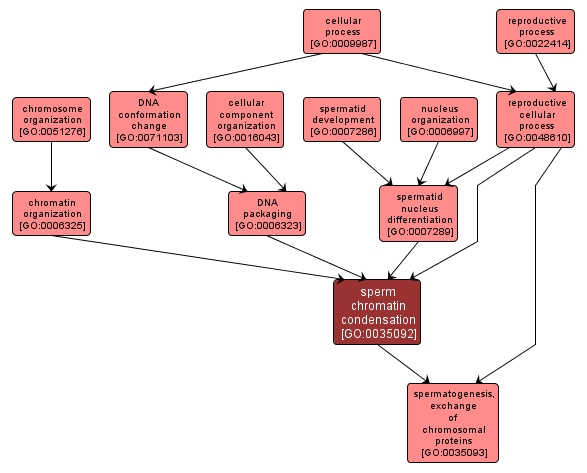GO TERM SUMMARY
|
| Name: |
sperm chromatin condensation |
| Acc: |
GO:0035092 |
| Aspect: |
Biological Process |
| Desc: |
The progressive compaction of the spermatid chromatin so that it reaches a level of condensation that is not compatible with nuclear activities such as transcription or DNA replication. |
|

|
INTERACTIVE GO GRAPH
|














